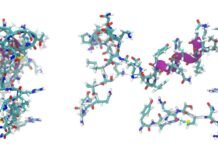Although prostate cancer affects about 1 in 9 men in their lifetimes, not many people fully understand it. It’s a disease that’s often stigmatized as solely a men’s issue or private concern. In reality, prostate cancer should be a widely-discussed problem, as it can affect any of our male friends, family members, or loved ones.
But, with organizations like No-Shave November, which encourages men to grow facial hair in support of men’s health issues like prostate cancer, gaining in popularity, the word is starting to spread– and with it, the stigma is starting to fade. People are becoming more educated about the importance of prevention and treatment of prostate cancer and the support of those living with it.
Here’s everything you need to know about prostate cancer so you can participate in No-Shave November well-informed and able to spread the word about the importance of education for this disease.
Symptoms
Unfortunately, the early stages of prostate cancer often have few to no symptoms, other than an enlarged prostate or urinary difficulties. Symptoms of more developed prostate cancer can include:
- Lower pelvic or back pain
- Pain during ejaculation
- Blood in the urine
- Sudden weight loss
If a patient experiences any of these, they should speak to their doctor to be examined and diagnosed. Even if the patient isn’t experiencing any symptoms, they should still have their physician perform a prostate exam every four years to find and, if necessary, treat the disease.
Risk factors
The risk factors of prostate cancer, like most cancers, are a mix of lifestyle and genetics. A personal history of smoking and poor diet can increase the chances of developing a fatal form of the cancer. Family history of prostate cancer also increases the risk. In fact, men who have a close relative who suffered from prostate cancer are 2-3 times more likely to develop it themselves.
One of the most important factors, however, is also age; as men grow older, their chances of developing the cancer increase. Men over 40 are at a much higher risk because damage to the DNA of prostate cells (one of the leading causes of the cancer) increases with age. The average age of diagnosis is 66.
Treatment
Prostate cancer survival rates are fairly high when discovered early, and are increasing with time as better forms of screening and treatment are developed. Treatment depends on the stage of the patient’s cancer and the risk associated with it, as well as their health and knowledge of long-term effects.
Prostate cancer is largely treated with surgery and radiation therapy. Surgery involves the removal of the entire prostate organ, either by a surgeon or robot. As long as the cancer hasn’t spread, this procedure should remove the disease and with it, the risk. Radiation therapy targets and kills cancer cells and is often more beneficial for early-term prostate cancer.
Less common alternative treatments include cryotherapy, hormonal therapy, and others. To learn more about those forms of treatment, check out this article from the Urology Care Foundation.
Life after prostate cancer
Because prostate cancer has such a high survival rate, there’s a lot of information available about what it’s like to live in remission. Typically, men can live healthy, happy lives after recovery. There are some common side effects, however, that sometimes don’t fade with time.
- Erectile dysfunction: ED, or the inability to get or keep an erection, is a common symptom of prostate cancer treatments. Nerves that help the penis react to sexual stimuli surround the prostate and can be damaged in treatment. If a patient experiences long-term issues with ED, they should speak with a doctor who can work on a treatment plan. They might recommend pelvic floor exercises like Kegels, or prescribe a medication that improves blood flow to the genitals. Both can improve erectile function and lead to a healthy sex life post-cancer treatment.
- Incontinence: After surgery, men might face the inability to hold their urine due to the prostate’s connection to the bladder. If a patient experiences moderate leakage more than a few weeks post-op, there are several forms of treatment to address the issue. These range from Kegel exercises to meditation and even surgery. If concerned about their level of incontinence, men should speak with their doctor about proper next steps.
- Depression: Some men have reported developing depression after their treatment. This may be caused by hormonal treatment which can cause a loss of sexual desire, fatigue or other external factors. If a patient experiences feelings of irritability, social withdrawal, or thoughts of self-harm, they should reach out to their doctor or a therapist right away. Often, counseling can help treat depression, or a doctor can prescribe the necessary medications.
With this knowledge about the basics of prostate cancer, will you elevate your support of No-Shave November? Spread the word about the importance of cancer screenings and the possibility of full recovery to help boost awareness and maybe even save some lives.
And, if you’d still like to support the No-Shave November cause, you should put down the razor and grow your hair out, or donate to the organization’s mission! Participants are encouraged to give the money they would have spent on regular grooming all month long, and instead, find fun ways to style their beards at every length that it might grow. If you need some assistance on how to maintain or shape your beard throughout the month, check out this guide from men’s wellness company, hims:

No matter how you choose to support No-Shave November’s mission, join the thousands of others across the country who will be using the entire month to support men’s health and spread awareness about diseases like prostate cancer.


























